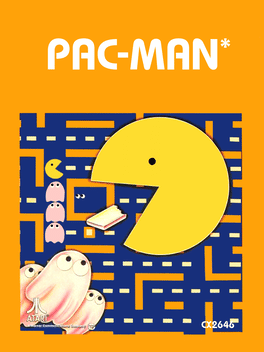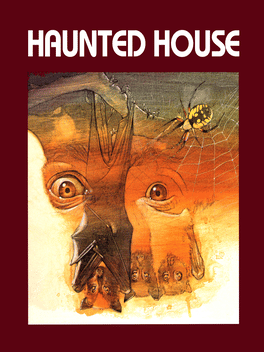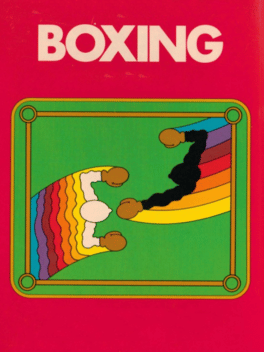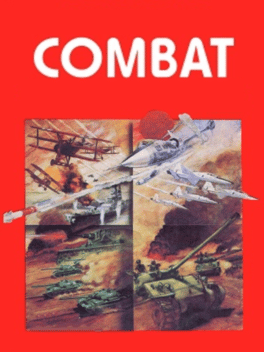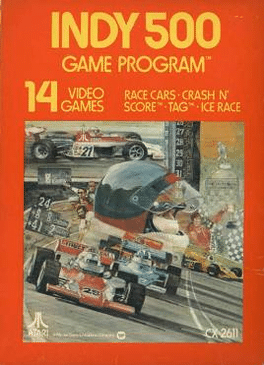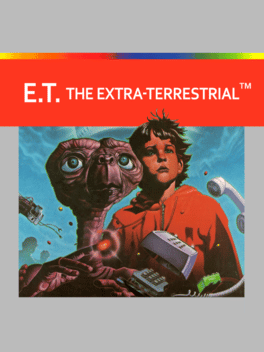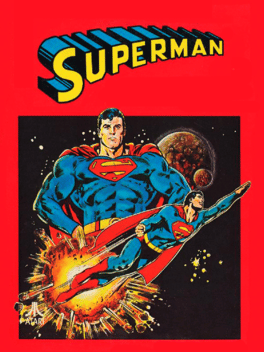Top Rated Atari2600 Games
-
Pac-Man
1982
Pac-Man
1982
star 7.9Atari 2600 Port of Pac-Man The player controls Pac-Man through a maze, eating pac-dots (also called pellets). When all pac-dots are eaten, Pac-Man is taken to the next stage. Between some stages one of three intermission animations plays. Four enemies (Blinky, Pinky, Inky and Clyde) roam the maze, trying to catch Pac-Man. If an enemy touches Pac-Man, a life is lost and the Pac-Man itself withers and dies. When all lives have been lost, the game ends. Pac-Man is awarded a single bonus life at 10,000 points by default. Near the corners of the maze are four larger, flashing dots known as power pellets that provide Pac-Man with the temporary ability to eat the enemies. The enemies turn deep blue, reverse direction and usually move more slowly. When an enemy is eaten, its eyes remain and return to the center box where it is regenerated in its normal color. Blue enemies flash white to signal that they are about to become dangerous again and the length of time for which the enemies remain vulnerable varies from one stage -
Adventure
1980
Adventure
1980
star 7.7Adventure is a video game for the Atari 2600 video game console, released in 1980. In the game, the player controls a square avatar whose quest is to hunt an open world environment for a magical chalice, returning it to the golden castle. The game world is populated by roaming enemies: dragons, which can eat the avatar; and a bat, which randomly steals and hides items around the game world. Adventure was designed and programmed by Atari employee Warren Robinett, and published by Atari, Inc. At the time, Atari programmers were generally given full control on the creative direction and development cycle for their games, and this required them to plan for their next game as they neared completion of their current one to stay productive. Robinett submitted the source code for Adventure to Atari management in June 1979 and soon left Atari. Atari released the game in early 1980. -
Alien
1982
Alien
1982
star 7.2Fox Video Games made the first leap into licensing the Alien property for video games with what was essentially a Pac-Man clone skinned with elements from the 1979 film. Players controlled a human collecting Alien eggs (dots) and small planet and spaceship symbols (fruits) in a maze abroad the USCSS Nostromo while avoiding Alien drones (ghosts). Drones could be killed by shooting them with a flamethrower or collecting symbols that would stun them (flashing dots). -
Haunted House
1982
Haunted House
1982
star 7.1Haunted House is an Atari 2600 video game written by James Andreasen and published by Atari, Inc. in February 1982. The player, represented by a pair of eyes, must navigate the haunted mansion of the late Zachary Graves to recover the three pieces of an urn. The game has been identified as one of the earliest examples of the survival horror genre. -
Boxing
1980
Boxing
1980
star 6.9Boxing is an action boxing game for one or two players which is played from an overhead point of view. The game lasts for two minutes, and the player who can earn the most points in that time wins. You earn one point for a long jab, two points for a close power punch, and if you can manage knockout it's worth one hundred points. Two difficulty levels are included which can be set individually for each player. -
Combat
1977
Combat
1977
star 6.9Combat is an early video game by Atari, Inc. for the Atari 2600. It was based on two earlier black-and-white coin-operated arcade games produced by Atari. Combat had color graphics and numerous gameplay variations. The 27 game modes featured a variety of different combat scenarios, including tanks, biplanes, and jet fighters. The tank games had interesting options such as bouncing munitions ("Tank-Pong") and invisibility. The biplane and jet games also allowed for variation, such as multiple planes per player and an inventive game with a squadron of planes versus one giant bomber. -
Dodge 'Em
1980
Dodge 'Em
1980
star 5.7Dodge 'Em is a 1980 Atari 2600 video game, a driving game based on Sega's Head On (1979). The player controls one car and has to drive counter-clockwise, avoiding computer-controlled cars whose sole aim is to produce a head-on collision. The player's car can travel at two speeds, a 'normal' speed which is the same speed as computer-controlled cars, or if the player presses the controller button, his or her car travels at a 'fast' speed double its normal speed. The computer-controlled cars have only one speed. Players change lanes by pushing the controller in the appropriate direction when their car is near one of the gaps in the roadway. -
Indy 500
1977
Indy 500
1977
star 5Indy 500 is a 1977 racing video game developed by Atari, Inc. for its Video Computer System (later known as the Atari 2600). It is themed around the Indianapolis 500, and is based on Atari's earlier 8-player arcade game, Indy 800. Indy 500 was one of the nine launch titles offered when the Atari 2600 went on sale in September 1977. Sears Tele-Games later re-released it as Race; no changes were made to the gameplay. Included with each game was a set of two driving controllers, which were identical in appearance to the 2600 paddle controller but could rotate indefinitely in either direction, among other differences. -
E.T. the Extra-Terrestrial
1982
star 4.8E.T. the Extra-Terrestrial (also referred to simply as E.T.) is a 1982 adventure video game developed and published by Atari, Inc. for the Atari 2600 video game console. It is based on the film of the same name, and was designed by Howard Scott Warshaw. The objective of the game is to guide the eponymous character through various screens to collect three pieces of an interplanetary telephone that will allow him to contact his home planet. It is widely regarded as the worst game ever made and one of the major contributing factors to the near death of the video game industry in 1983. -
Space War
1978
Space War
1978
star 4.7This video game is an Atari 2600 port of Spacewar!, the famous 1962 computer game by Steve Russell. The cartridge comes programmed with 17 game variations. Variations 1 to 13 are duels between two ships and 14 to 17 are for one player. In some of the variations the ships fight near a planet which has gravitational attraction. This concept was used in the Star Control series of games. -
Superman
1979
Superman
1979
star 3Superman is an action adventure game for the Atari 2600. It was one of the first single-player games for the system and one of the earliest licensed video games. Superman is one of the first to utilize multiple screens as playing areas.
